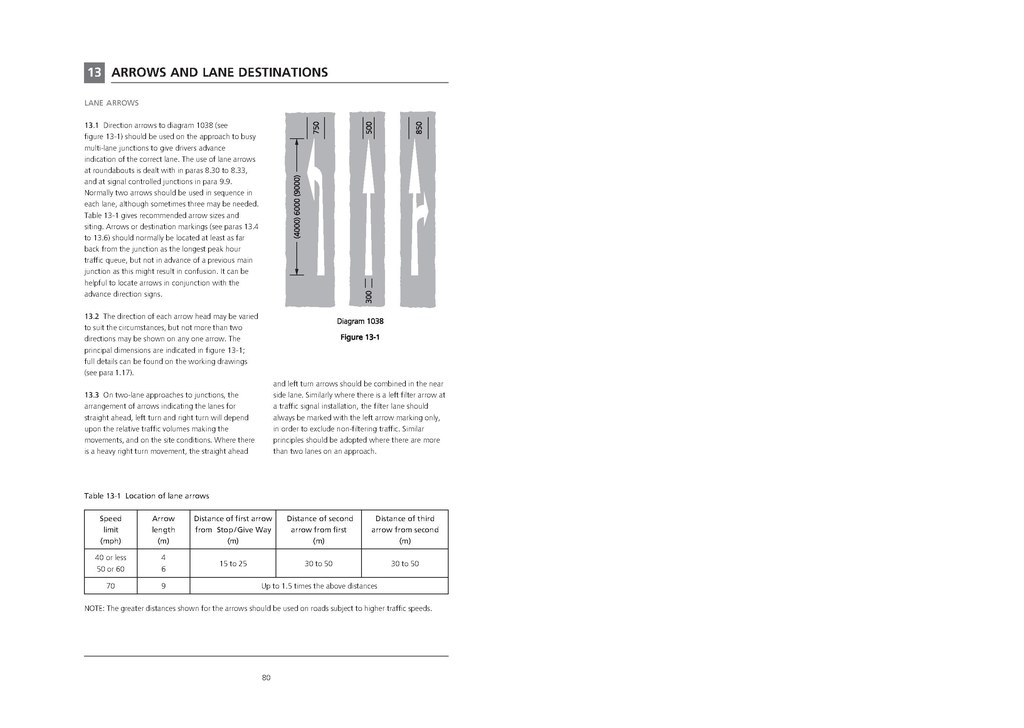13ARROWS AND LANE DESTINATIONS

LANE ARROWS
Direction arrows to diagram 1038 (see figure 13-1) should be used on the approach to busy multi-lane junctions to give drivers advance indication of the correct lane. The use of lane arrows at roundabouts is dealt with in paras 8.30 to 8.33, and at signal controlled junctions in para 9.9. Normally two arrows should be used in sequence in each lane, although sometimes three may be needed. Table 13-1 gives recommended arrow sizes and siting. Arrows or destination markings (see paras 13.4 to 13.6) should normally be located at least as far back from the junction as the longest peak hour traffic queue, but not in advance of a previous main junction as this might result in confusion. It can be helpful to locate arrows in conjunction with the advance direction signs.
The direction of each arrow head may be varied to suit the circumstances, but not more than two directions may be shown on any one arrow. The principal dimensions are indicated in figure 13-1; full details can be found on the working drawings (see para 1.17).
On two-lane approaches to junctions, the arrangement of arrows indicating the lanes for straight ahead, left turn and right turn will depend upon the relative traffic volumes making the movements, and on the site conditions. Where there is a heavy right turn movement, the straight ahead and left turn arrows should be combined in the near side lane. Similarly where there is a left filter arrow at a traffic signal installation, the filter lane should always be marked with the left arrow marking only, in order to exclude non-filtering traffic. Similar principles should be adopted where there are more than two lanes on an approach.
| Speed limit (mph) |
Arrow length (m) |
Distance of first arrow from Stop / Give Way (m) |
Distance of second arrow from first (m) |
Distance of third arrow from second (m) |
|---|---|---|---|---|
| 40 or less | 4 | 15 to 25 | 30 to 50 | 30 to 50 |
| 50 or 60 | 5 | |||
| 70 | 9 | Up to 1.5 times the above distances | ||
NOTE: The greater distances shown for the arrows should be used on roads subject to higher traffic speeds.
80
